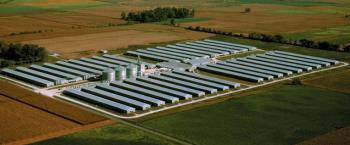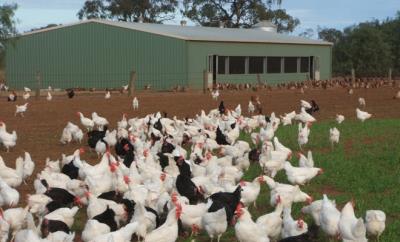 Three items in this edition of EGG-NEWS when taken together depict the state of the U.S. egg industry as affected by COVID-19. There are obvious indicators predicting the future when consolidating the data and reports relevant to the present situation.
Three items in this edition of EGG-NEWS when taken together depict the state of the U.S. egg industry as affected by COVID-19. There are obvious indicators predicting the future when consolidating the data and reports relevant to the present situation.
The first item concerns weekly report on egg prices and inventory. The USDA data confirms that wholesale prices have fallen back to their February levels. The unprecedented spike in price was due to panic COVID buying, but the transitory nature of the event did not compensate for the many months of losses in 2019 extending into the beginning of this year. The weekly egg report in this edition confirms a 1.7 million increase in the number of hens in production. True to form the industry is not demonstrating the requisite restraint that should dictate depletion of older flocks until market stability returns. A ray of hope is that the level of stock declined 1.8 percent over the past week. This suggests that demand for home cooking persists but obviously not reflected in the panic levels displayed from late March through early April. Before the price spike, a number of producers had exhausted their working capital. With institutions disinclined to extend financial support, based on doubtful capacity to service and repay the principal, the future for some producers appears bleak. This is especially the case with small to medium sized family-owned farms selling generic eggs and operating with obsolete cage housing.
 The second posting relates to the action initiated by the Attorney General of the state of Texas against Cal-Maine Foods, the nation's largest producer with a dominant position in that state. The justification for the rise in price both at the wholesale and retail levels was eloquently stated by Cal-Maine. Their response raises the question of the undue influence on pricing by Urner Barry and whether their price discovery system is distorting market prices to the disadvantage of the industry. Some new impartial system of establishing an equitable relationship between producers and chains is required such as a CBT future quotation for eggs.
The second posting relates to the action initiated by the Attorney General of the state of Texas against Cal-Maine Foods, the nation's largest producer with a dominant position in that state. The justification for the rise in price both at the wholesale and retail levels was eloquently stated by Cal-Maine. Their response raises the question of the undue influence on pricing by Urner Barry and whether their price discovery system is distorting market prices to the disadvantage of the industry. Some new impartial system of establishing an equitable relationship between producers and chains is required such as a CBT future quotation for eggs.
The third concern is raised by the posting on the Zimmerman family farm in Pennsylvania that illustrates the plight of small contractors. The margins generated by independent family-owned farms producing specialty cage-free and organic eggs are subject to the vagaries of the market and packers. The black-swan emergence of COVID-19 has effectively suspended the food service component of the shell-egg market. The effect of COVID-19 on the chain extending from small contract producer through to patrons of restaurants, school and university dining facilities was evident within days of the adoption of home confinement. As with musical chairs, all players enjoy the game until the music stops. Our hope is that restaurants will re-open and will be patronized, creating demand for shell eggs and egg liquid. This will reestablish the pipeline from small-scale producers and contractors and in-line breakers through processors to the food service market.
The advent of COVID-19 has clearly indicated the interdependence of segments of our industry and demonstrates the inability to respond to sharp changes in the operating environment. Overproduction creates an added level of vulnerability that is amplified with changes in supply or demand and is reflected in pricing.
Hopefully the U.S. egg industry will emerge from our current travails stronger but possibly with fewer independents and more consolidation to face future challenges. These include conversion to cage-free housing, possible emergence of disease, both in flocks and now in workers and our Nation’s recovery from a severe recession.